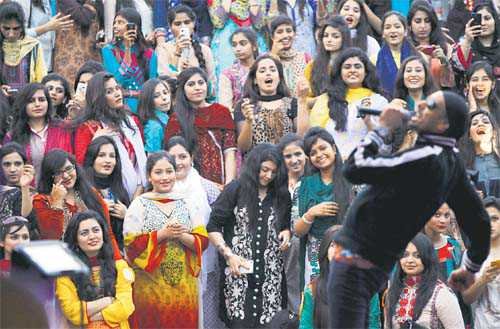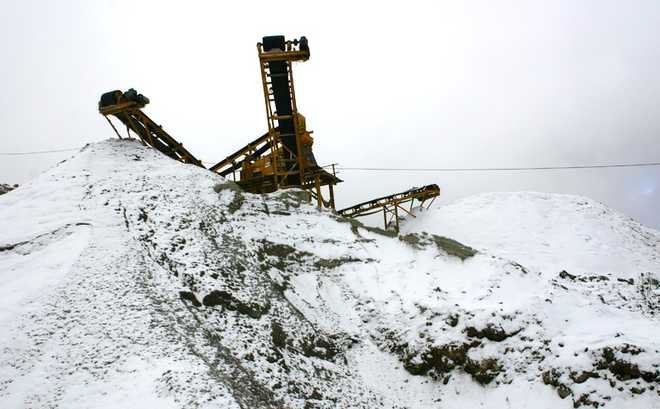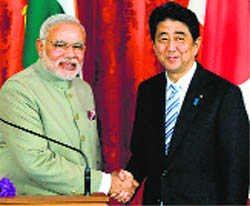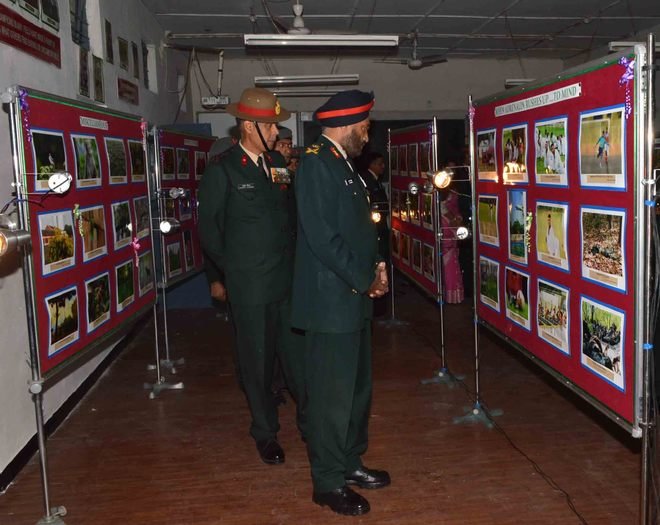Air India One’s detour to Lahore was a stunning public relations coup. But it has the potential to rearrange the geopolitics of the region, mired in mistrust and violence. Prime Minister Narendra Modi claimed to have suddenly decided to visit Lahore. This left little time for the usual suspects to throw in a spanner or two. The Tribune has welcomed the succession of high level Indo-Pak meetings chalked out over the last three months that will lead to Modi’s proposed visit to Islamabad later next year for the SAARC summit. The brief Modi-Nawaz Sharif conversation should empower diplomacy to iron out procedural wrinkles and accommodate each other’s political limitations before next month’s meeting of Foreign Secretaries.
The ripple-waves from the break in journey in Lahore go beyond imparting personal warmth in Indo-Pak bilateral ties. With his knack of high drama, Modi landed in Lahore on Nawaz Sharif’s birthday. It also happened to be the birthday of Atal Behari Vajpayee who embarked on normalisation of ties just two years after the Kargil War. But there have been several such moments earlier. What was more noteworthy is that this is the first time an Indian PM has stopped in Pakistan on the way back from Afghanistan. In a diplomatic world, hooked on gestures and symbolisms, this will be read as India’s assurance of walking back from a mutually adversarial position in Afghanistan.
Indo-Pak rapprochement now has several powerful backers, partly because of the regional security situation. The resilience shown by ISIS has caught the fancy of a section of Central Asian youth. The lack of engagement has led to some Taliban commanders pledging allegiance to ISIS. The West, forced to redeploy its forces in Afghanistan much against its wishes, dearly wants India-Pakistan to work out a political settlement and prevent the rise of ISIS in the region. Pakistan has already asked its Ministers not to speak ill of India. Modi needs to advice his party colleagues and also the Sangh Parivar not to publicly articulate their worldview about Pakistan. From Lahore, the journey to Islamabad should be a smooth ride.
India-Pak relations: We can learn to look forward

A correct and impartial reading of history will show us that the people who can learn to look forward instead of backwards, need not be condemned to relive the past, and consequently learn to live with each other harmoniously.
There is some hope of lessening tension between India and Pakistan. This follows the visit of India’s Foreign Minister to Pakistan and the talk in a cordial atmosphere with Prime Minister of Pakistan Nawaz Sharif. This is welcome because we unnecessarily bring in the past by invoking the wars between India and Pakistan in 1965 and 1971.
The war of 1965 was a no-win for either Pakistan or India. India had to give up its march to Lahore and Pakistan’s initial success in Khem Karan was shattered by soldiers like Abdul Hamid (the recipient of the first Param Vir Chakra) and the dogged refusal to withdraw. The patriotism of General Harbakhsh Singh resulted in the Pakistan Patton tank graveyard at Khem Karan in East Punjab. Both the countries agreed to a settlement supervised by a third nation.
The 1971 war was forced on us. The Pakistan army attack on East Bengal and the refugees fleeing for safety was creating an intolerable burden on India — both because of human rights considerations and massive, almost back-breaking, financial strain of providing relief to the Bangladeshis.
Indira Gandhi tried her best to persuade President Nixon, who was sympathetic to Pakistan, to intervene at an early stage. In July 1971, Henry Kissinger had a stopover in India on a secret visit to China. Indira Gandhi invited Kissinger for a private breakfast meeting for consultation.
However, the evening before Indira Gandhi telephoned General Manneckshaw, our then Army Chief and told him that she would like him to come and meet her at breakfast the next morning and further told him to come in the Army uniform.
At that meeting, Mrs Indira Gandhi was persistent in asking Kissinger to plead with Nixon that he should try to restrain Pakistan for what was being done in East Pakistan because the conditions there were becoming intolerable and it was impossible for India to remain silent. Kissinger, however, went on prevaricating and would not really give a straight answer. Rather, he tried to underplay the situation. Obviously rattled, Indira Gandhi said if that was the position she may have to do something herself, something which she was reluctant to do. At this, Kissinger again expressed his inability on his and Nixon’s behalf to do anything and asked her, rather ironically, as to what she intended to do. At that time she stood up and pointing towards the General (who was in full Army uniform) told Kissinger that if the US President could not control the situation then she was going to ask him (meaning the General) to do the same. There was stunning silence for a minute but the sharp message was conveyed to Kissinger. Nixon and Kissinger had their egos deflated and never forgave Indira Gandhi for such an attitude.
India obviously could not take any initiative against Pakistan as that would have been a breach of international law. There had to be proper justification for India to act against Pakistan and hence a wait was necessary.
In the meanwhile, refugees were continuing to pour in from East Bengal. Siddhartha Shankar Ray was in charge of refugee welfare. On one of the usual visits by Indira Gandhi to the border, where a public meeting was to be held to reassure the refugees that they would be looked after properly, she told Ray that after public meeting she would go back to Delhi, and that Ray should stay for some days in Calcutta and come later.
At the public meeting that Mrs Gandhi was addressing, one of her aides handed her a small paper. She read it and put it in her pocket and continued as usual with her speech. After the meeting ended, while going to the airport, she told Ray that he should come along with her to Delhi. Ray was a little surprised at this sudden change of his programme. But her followers did not ask questions of Indira Gandhi — there was implicit compliance. After about 15 minutes of the flight onward to Delhi, Mrs Gandhi leaned back in her seat, a bit relaxed, took out the paper given to her at the public meeting and told Ray: “Pakistan has attacked”. At first blush, it would seem strange that Mrs Gandhi should seem relaxed on knowing about the Pakistan attack. But there was obvious logic. India was reeling under the influx of refugees, yet it dared not attack East Bengal, because then the world opinion would have called it the aggressor. An excuse was necessary and Pakistan had conveniently provided it. Obviously, it was based on the wrong information that our aircraft was still at Pathankot because by then it had been moved to Nagpur.
Fairness demands that we must be objective. War on the East Bengal front was all weighed in favour of India. As General Arora told me, though to start with some hard knocks were taken, it was a smooth march. The whole population of East Bengal was against Pakistan. The movements of the Pakistan army were leaked in detail by the Mukti Bahini and their volunteers to the Indian Army, whose task was made easy. To make matters still worse, the Indian Air Force had no opposition and bombard General Niazi’s official residence. As one of the Air Chiefs told me: “You can’t imagine the panic — the utter helpness at being bombard from above by enemy planes, knowing fully well that you cannot even send one plane to stop them. It was inevitable that Niazi surrendered without taking much time. But let us not gloat over it. We have a history of thousand years of joint living and culture — it would be an unimaginable tragedy to ignore it.
Wrong deduction from history and culture are being spread to fan India-Pakistan hostilities. I do not deny that the history of a people, a state or a nation is part of its culture, its tradition and its identity and they can no more be forgotton than an individual can forget his or her personal history.
I do not deny that those experiences contribute to the present hostility between India and Pakistan. But yet maturity is a process in which those experiences are absorbed and reinterpreted in such a way so as to enable the individual and the nations to live in the present and not in the past.
A correct and impartial reading of history will show us that the people who can learn to look forward instead of backwards, need not be condemned to relive the past. Let India and Pakistan not ignore this warning, especially when both are nuclear powers.
The writer is a retired Chief Justice of the Delhi High Court.














































































